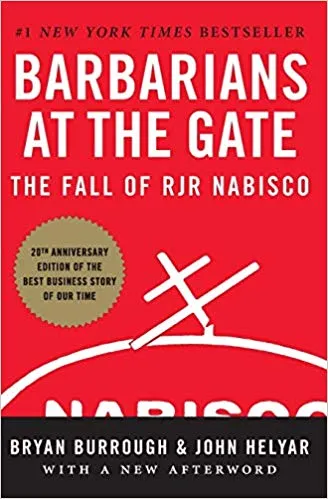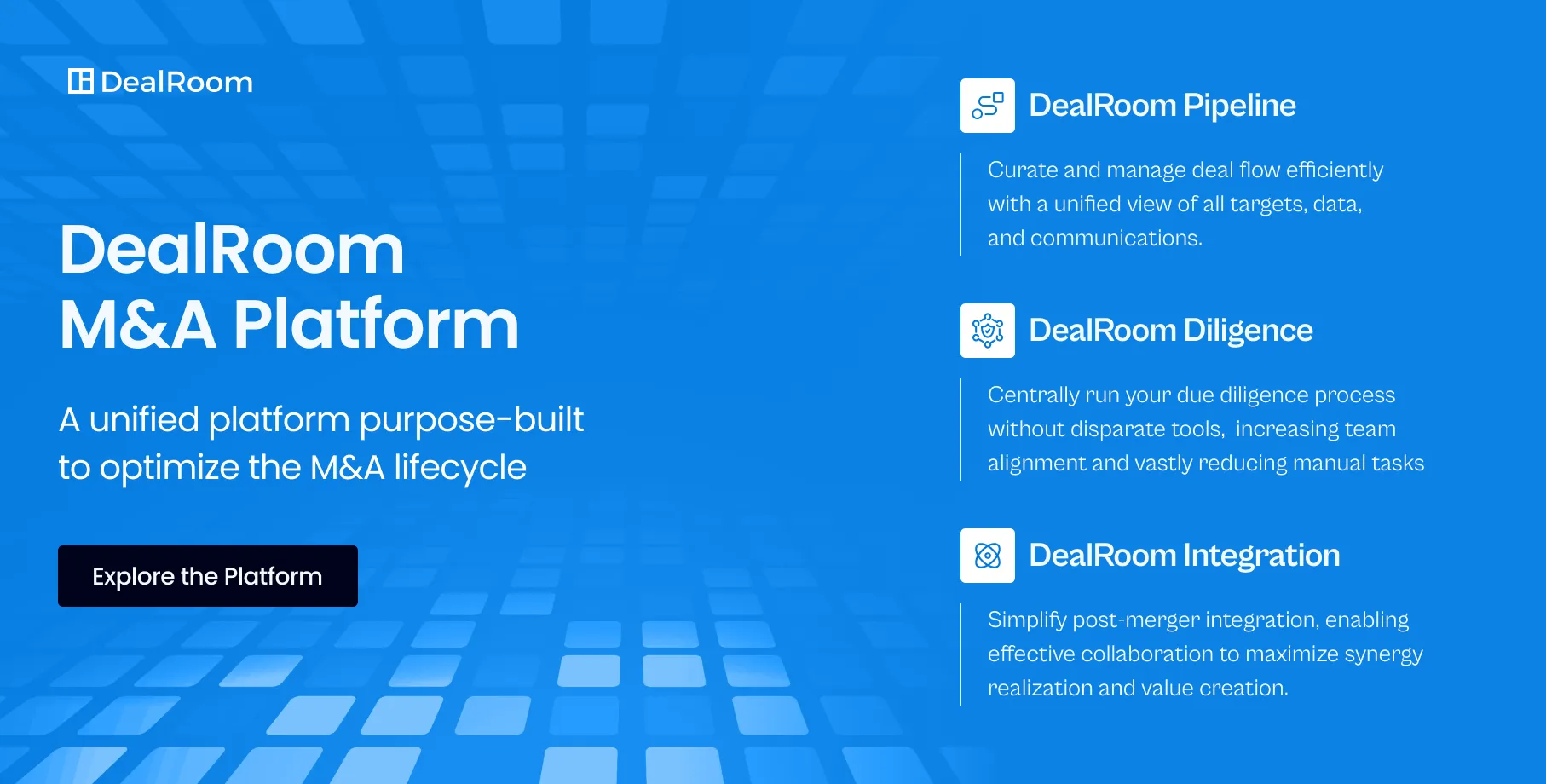The library of literature on mergers and acquisitions is growing in both size and quality. What started as a collection of rather dreary tomes on M&A and antitrust in the 1920s and 1930s has evolved into something far more diverse and interesting.
The 1975 release of James C. Freund’s “Anatomy of a Merger” marked a turning point in the publishing world. Books based on practitioner experience, rather than statistical evidence, began hitting store shelves and gaining popularity with readers.
Over the next two decades, hostile takeovers became the corporate norm, producing an entirely new category of books on topics like deal structuring, post-merger integration, and corporate finance. The 1980s also brought about the age of conglomerates and leveraged buyouts—a combination that inspired the foundational M&A book “Barbarians at the Gate” by Bryan Burrough and John Helyar in 1989. And with the number of global transactions on a seemingly constant upward trajectory, we can reasonably expect more books on M&A deals to be published in the near future.
FYI, if you’re looking to learn more about mergers and acquisitions, we recommend checking out our latest article on M&A training.
As of this publication date, these are five of the best books on M&A out there. Each one contributes something different of value to the conversation, and all are time well spent.
5 Best M&A Books
- “Barbarians at the Gate: The Fall of RJR Nabisco” by Bryan Burrough and John Helyar
- “Agile M&A: Proven Techniques to Close Deals Faster and Maximize Value” by Kison Pate
- “Valuation: Measuring and Managing the Value of Companies” by Tim Koller, Marc Goedhart, David Wessels
- “Masterminding the Deal: Breakthroughs in M&A Strategy and Analysis” by Peter Clark and Roger Mills
- “Creating Value from Mergers and Acquisitions: The Challenges” by Sudi Sudarsanam
Keep reading to learn more about all five, including key takeaways and links to purchase.

1. “Barbarians at the Gate: The Fall of RJR Nabisco,” Bryan Burrough and John Helyar
“Recognize that ultimate success comes from opportunistic, bold moves, which by definition, cannot be planned.”
As relevant today as it was over a decade ago, “Barbarians at the Gate” is a cautionary tale about the greed and infighting that underpinned an era-defining leveraged buyout in the 1980s. The book goes to considerable lengths to describe the intricacies of this massive deal while demonstrating how more volatile, loud individuals can overpower their less vocal but more level-headed colleagues. The book reads like a thriller, and you’ll never look at Oreos the same way after completing it.
Key Takeaway: When several players are involved in putting a deal together, the more dominant personalities will inevitably drown out the quieter, more strategic voices. Understanding what’s worth hearing, and what’s little more than noise, is crucial to ensuring an M&A transaction is a success.
Mini-Review: A dynamic and dramatic book about business egos, Wall Street, and the cutthroat world of 1980’s M&A.
Amazon link: Barbarians at the Gate: The Fall of RJR Nabisco
.webp)
2. “Agile M&A: Proven Techniques to Close Deals Faster and Maximize Value,” Kison Patel
“At its core, Agile is a problem-solving mindset - a way of conceptualizing and responding to constantly changing environments - which values spontaneity, creativity, and swift reaction to novel situations over established procedure, itemization, and static workflow.”
DealRoom CEO Kison Patel spent years working on transactions before a brief project led him to work closely with software developers. As a result, he started to rethink the entire M&A process. As the author himself states, “agile” has become a misused buzzword, not unlike “synergy” and “innovation.” However, that’s not what the book is about. Instead, Patel outlines, in a step-by-step manner, the Agile M&A process and how it can generate value for real-world M&A practitioners.
Key Takeaway: Despite the realization that M&A is failing thousands of businesses, the methodology for closing transactions has remained largely unchanged for the better part of a century. Slowly, the most successful deal closers are moving towards something the author calls “Agile M&A.”
Mini-Review: A practical guide to modern M&A transactions and deal fundamentals through an Agile lens.
Amazon link: Agile M&A: Proven Techniques to Close Deals Faster and Maximize Value
.webp)
3. “Valuation: Measuring and Managing the Value of Companies,” Tim Koller, Marc Goedhart, David Wessels
“Extremely large companies struggle to grow. Excluding the first year, companies entering the Fortune 50 grow at an average of only 1 percent (above inflation) over the following 15 years.”
Although not strictly a book on M&A, “Valuation” by a group of senior consultants at McKinsey is essential reading for anyone involved in transactions. The authors go into considerable detail about how and where value is generated and how managers often don’t think critically enough about growth and valuation. The illustrative examples of Return on Invested Capital (ROIC) and how goodwill affects the profit-generating capacity of M&A are particular highlights.
Key Takeaway: Truly understanding your company’s ROIC, as opposed to looking at growth as a standalone measure, is the key to sustainable value creation.
Mini-Review: Now in its 5th edition, “Valuation” is a must-read for those interested in corporate finance and financial modeling, whether they’re a beginner or a seasoned professional.
Amazon link: Valuation: Measuring and Managing the Value of Companies, 5th Edition
.webp)
4. “Masterminding the Deal: Breakthroughs in M&A Strategy and Analysis,” Peter Clark and Roger Mills
“Every deal tends to be described by the acquiring firm’s chief executive officer as unique. They aren’t...approximately two-thirds of all deals fail, based on prevailing financial return-based criteria.”
This book may as well be titled, “There’s a good chance your deal isn’t going to generate value and don’t say we didn’t tell you so.” Despite the authors’ seemingly cynical view of M&A transactions, their work offers an excellent analysis of M&A that is part descriptive and part prescriptive. It covers everything from a breakdown of various merger waves throughout history to the psychology involved at various stages of M&A cycles, and even busts several myths about the effects of deals on companies.
Key Takeaway: The authors introduce the concepts of Net Realizable Synergies (NRS) and Acquisition Purchase Premium (APP) as ways of thinking about whether a deal is successful or not. Both are useful ways of rethinking deal impact and deal structuring.
Mini-Review: An in-depth examination of the art of M&A, including everything from deal due diligence to corporate restructuring.
Amazon Link: Masterminding the Deal: Breakthroughs in M&A Strategy and Analysis
.webp)
5. “Creating Value from Mergers and Acquisitions: The Challenges,” Sudi Sudarsanam
“One of the most puzzling aspects of the merger phenomenon is the widespread perception that mergers and acquisitions do not create value for the stakeholders and in fact destroy value. If so, given the stupendous scale of the investment that mergers represent and the losses to stakeholders, including possible welfare losses to the community as a whole, we need a serious investigation of the reasons for such failure.”
Similar to the previous text on this list, “Creating Value from Mergers and Acquisitions” is descriptive in parts, but remains mainly prescriptive. The authors cover every part of the M&A process, from search right through to the integration process. With over 600 pages of well-divided sections and comprehensively covered topics, this book is an excellent reference manual for anybody considering a transaction.
Key Takeaway:The key takeaway of this book may be its size, which gives some indication of how much there is to learn about M&A for the average practitioner.
Mini-Review: A complete and rigorous examination of all things M&A, complete with case studies, statistical analyses, and multidisciplinary research.
Amazon Link: Creating Value from Mergers and Acquisitions: The Challenges
What to read next on mergers and acquisitions
Already read the five books listed above? A few more suggestions to add to your to-read pile include “The Dark Side of Valuation: Valuing Young, Distressed, and Complex Businesses” by Aswath Damodaran, “Mergers and Acquisitions Playbook: Lessons from the Middle-Market Trenches” by Mark A. Filippell, and “Deals from Hell: M&A Lessons that Rise Above the Ashes” by Robert F. Bruner.
If you already feel like a bit of an expert on M&A, we suggest branching out into other related topics, such as investment banking, financial modeling, corporate finance, and growth strategy. You might even ask your colleagues for reading recommendations based on your specific interests. And while books are fantastic resources, online or in-person courses, digital thought leadership, and communities (virtual or otherwise) on these topics can be extremely valuable as well.
No matter which texts or other resources you choose, there is undoubtedly something you can learn from each, and anybody involved at any stage of the M&A process could benefit from exploring new perspectives. Happy reading from the team at DealRoom.
Frequently Asked Questions
What are the best mergers and acquisitions books?
Top M&A books include Investment Banking: Valuation, Leveraged Buyouts, and Mergers & Acquisitions by Joshua Rosenbaum and Joshua Pearl, Mergers and Acquisitions from A to Z by Andrew J. Sherman, and Mergers, Acquisitions, and Other Restructuring Activities by Donald DePamphilis. These cover valuation, negotiation, and post-deal integration.
What book is best for beginners in M&A?
Beginners often start with Mergers and Acquisitions from A to Z by Andrew J. Sherman. It breaks down deal stages in plain language and is ideal for readers new to corporate finance or transaction work.
What books help with M&A valuation?
Investment Valuation by Aswath Damodaran and Valuation: Measuring and Managing the Value of Companies by McKinsey & Company are among the best guides. They explain how to calculate value using real-world financial models.
What book explains the M&A process step by step?
The Art of M&A by Stanley Foster Reed and Alexandra Reed Lajoux is a go-to manual for understanding deal structure, due diligence, and negotiation. It’s often used by lawyers, bankers, and corporate executives.
Are there M&A books with case studies?
Yes. Applied Mergers and Acquisitions by Robert Bruner features detailed case studies from major transactions. It helps readers see how theory translates into practice.
What books cover M&A integration?
The Complete Guide to Mergers and Acquisitions by Timothy J. Galpin and Mark Herndon focuses on integration. It outlines strategies to combine operations, teams, and cultures after a deal closes.
What are the best books for understanding M&A strategy?
Merge Ahead by Gerald Adolph and Justin Pettit explains how M&A fits into long-term business growth. It shows how to identify the right deals and avoid overpaying.




















.png)
.webp)



.webp)
.webp)
.webp)





.png)
.png)
.png)
.svg)

.svg)
.png)
